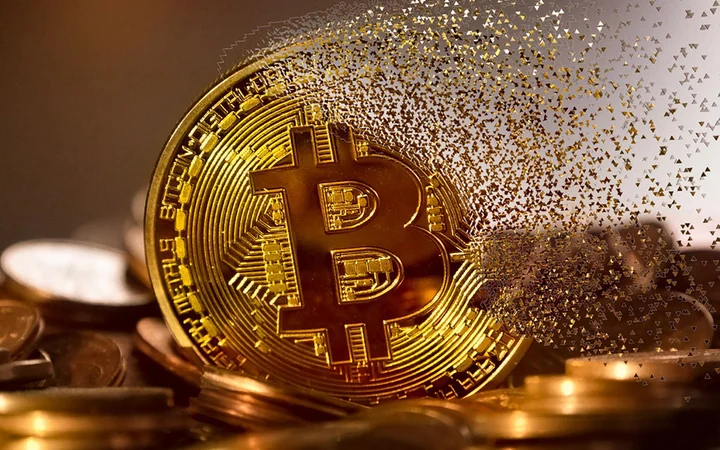What is BTC RGB?
What is BTC RGB and How Does it Work?Author: Wayne, CEO of TokenInsight
If you’ve read articles about Layer2 before, you probably know that data availability is crucial for blockchain. Data availability means whether the data exists on the chain and is part of the blockchain’s global state. If not, it exists off-chain, and the security of the data may not be guaranteed. However, it can save a lot of resources for the blockchain and improve its transaction processing capabilities.
If the data doesn’t exist on the blockchain but can still support some degree of data validation for security, what would that be?
Client Validation
Firstly, you need to understand that as an individual using software, you are the client. So, the software installed on your computer is the client. For example, if you want to play a game, you need to download a game client. But where do you download it from? Generally, it’s from the game company’s servers since they provide the service, so they are the server.
- Prominent Silicon Valley VC engages in a conversation with Nadella Latest insights on AI productivity and agency.
- everLianGuaiy Real-time Payment Layer 2 based on Arweave and SCP
- Cryptocurrency Master McAfee’s Widow Unaware of Husband’s Cause of Death, Relies on Gig Work for Survival.
Are there any differences between the client and the server? In a game, what should be on the client side and what should be on the server side for processing?
The content that does not affect the core game balance, such as the quality of image display, is placed on the client and processed by your graphics card. Core data, such as the amount of damage caused by using a skill on an opponent or the amount of money exchanged in a transaction with another player, is placed on the server.
Why am I mentioning this? Mainly to help you understand and remember what the server means in this context.
Let’s shift our focus back to blockchain. Bitcoin and Ethereum handle all data on the server side, meaning that even if you install their software (like a wallet), all the data, such as the amount of money in an address, is on the “server,” which is the data provided by the blockchain. Your client doesn’t need to do much work, not even verifying the data, but only needs to parse and display it.
The result of doing it this way is a concept you may be familiar with: all the work is done on the chain. Since the workload on the chain is significant and burdensome, there are limitations on what can be processed. Therefore, scaling is needed, and that’s when Layer 2 and modularization come into play.
Alright, by now, you should understand that even with good performance, the client, because it doesn’t do much, can’t solve the performance issues of the blockchain. Only by improving the performance of all the nodes on the chain can the performance be enhanced. So, even with a powerful computer, running the Bitcoin network may still be inefficient. Conversely, even with a low-end computer, running a Bitcoin wallet can still be smooth. That’s the benefit of not burdening the client with work.
(Unlike some terrible cities in the skyline 2 game, where even with a top-notch 4090 graphics card after years of development, you can barely achieve 30 frames per second.)
If you’re interested in Bitcoin client validation, I recommend you take a look at this report on Bitcoin client validation written by Diamond Hands: https://docsend.com/view/he8x9erkjmphphvn. Diamond Hands is involved in Bitcoin technical development, has developed a wallet that supports the RGB protocol, and is also part of the Bitcoin community in Japan.
RGB Network
After talking about client verification, we can finally talk about the RGB protocol. First of all, RGB is a protocol that supports smart contracts, which is its main purpose. According to official propaganda, RGB is a smart contract + privacy extension layer for Bitcoin and Bitcoin Lightning Network.
So, RGB can be understood as a smart contract network built on top of Bitcoin, which supports the issuance of tokens (similar to issuing coins on Ethereum). Currently, RGB has both Fungible and Non-fungible token standards.
Where are the issued coins and the transaction information in the RGB network recorded? Who verifies them to ensure security? And how does it achieve scalability and privacy?
In simple terms, all transactions in the RGB network occur within its own network. The Bitcoin network does not have detailed information for each transaction, similar to Ethereum. Of course, Bitcoin network does not support this. However, a digest/commitment of each transaction in the RGB network is recorded in the Bitcoin network.
How is this recorded then?
Specifically, the way it is recorded is by generating a commitment for each transaction in the RGB network (off-chain transaction for Bitcoin) and embedding it into the Bitcoin UTXO. Please note that each transaction has a corresponding UTXO, which means that each transaction can be found on the Bitcoin network.
As for the specific way and which information is recorded, you don’t need to worry about it for now.

Image source: Dimond Hands Report
Simply looking at the image above, the top row represents RGB transactions and the bottom row represents Bitcoin network transactions. Each transaction in the top row can be mapped to a UTXO (a part of a Bitcoin transaction) in the Bitcoin network.
As for which UTXO it corresponds to, it is not certain. Only the owner can match them. So, for the public Bitcoin network, even if you can see the RGB Commitment, you cannot correspond it to the specific transaction in the RGB network, ensuring privacy.
Now, let’s move on to the remaining question. Since RGB is off-chain, how are all the transactions verified? Hey, this brings us back to the client we mentioned at the beginning. RGB transactions are verified by the client, meaning that the user of the transaction verifies it. For example, if you receive an RGB network coin transaction, you want to verify if the coin really exists or if the quantity is correct. In this case, you need to provide the person who is transferring the coins to you with the Commitment of your transaction and the specific location of the Commitment on the Bitcoin network all the way to its source.
Doesn’t it sound hard to understand? Look at the picture below and you will understand.

Source: https://medium.com/@FedericoTenga/understanding-rgb-protocol-7dc7819d3059
If you want to verify the transaction in the red circle in the picture above, you need to provide all the information related to the red circles in the picture to the person you are transferring the money to, starting from point P and going all the way up. This way, you can verify all the Commitments on the Bitcoin network. And this verification process is done off-chain, without using Bitcoin network’s computational/storage resources.
The most important thing you need to understand is:
Smart contracts can now be created on the RGB network, but the state of these smart contracts is recorded on the Bitcoin blockchain (UTXO). The state changes of smart contracts are also recorded on the Bitcoin blockchain in the form of UTXOs. However, the smart contracts themselves are created off-chain (for Bitcoin), and the transactions of smart contract transfers also occur off-chain.

How has it developed now?
Because of the development of BRC20, this concept has recently gained more attention. Currently, it is still quite imperfect. RGB released version 0.10 7 months ago, and 2 months ago, they officially announced version 0.10 stable and usable after some repairs.
Now there are:
-
Android wallet: https://play.google.com/store/apps/details?id=com.iriswallet.testnet
-
Web wallet: https://bitmask.net/
-
Browser: https://rgbex.io/
Of course, there are other projects as well. This Github page provides some information about RGB. If you’re interested, you can take a look at it: https://github.com/22388o/awesome-rgb-protocol
By the way, RGB stands for red, green, blue. So, you can see that the logo of this project consists of these three colors. Additionally, the true meaning of RGB is “really good bitcoin..”
We will continue to update Blocking; if you have any questions or suggestions, please contact us!
Was this article helpful?
93 out of 132 found this helpful
Related articles
- Gaming Giant WeMade’s Infamous Token ‘Relisted’ in South Korea Drama Reloaded!
- Ethereum Staking from a Lido Perspective Exploring Lido’s Dominance
- Ethereum’s biggest mystery finally unraveled $470 million worth of sleeping wallet belongs to this banking giant.
- LianGuai Morning News | Circle Internet considers IPO in 2024, Robinhood to launch EU cryptocurrency trading business.
- Blockchain Governance Comedy Show: Decentralized Decision-Making Meets Harvard Lawyers
- Ritual Raises $25 Million to Bring AI to the Masses
- Visa’s New AI Advisory Practice: Unlocking the Potential of AI with a Touch of Visa Magic! 🔮💳




